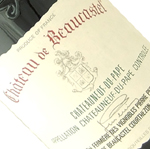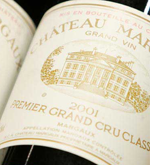Champagne history
While for most of its history Champagne was still and red, it is the sparkling white version of Champagne that is most widely known.
Opens with "A Little History", accounting numerous occurrences throughout time of accidental sparkling wine, and the first documented evidence of a deliberately produced sparkling wine, as recorded by Christopher Merret. In Merret’s eight-page paper "Some observations concerning the ordering of wines", which he presented to the newly formed Royal Society on December 17, 1662, he states “our wine-coopers of recent times use vast quantities of sugar and molasses to all sorts of wines to make them drink brisk and sparkling”. Stevenson explains why the French did not have the technology to produce any sparkling wine in 1662, and how it was almost inevitable that the English did. He explains the paradox of "sparkling champaign", which is mentioned by George Etheredge in The Man of Mode in 1676, yet did not exist in France until the late 1690s. The documentary evidence presented is a significant aspect of Christie’s World Encyclopedia of Champagne & Sparkling Wine, though only a part of it.
The history of Champagne
has seen the wine evolve from being a pale, pinkish still wine to the sparkling wine now associated with the region. The Romans were the first to plant vineyards in this area of northeast France, with the region being cultivated by at least the 5th century, possibly earlier. When Hugh Capet was crowned King of France in 987 at the cathedral of Reims, located in the heart of the region, he started a tradition that brought successive monarchs to the region—with the local wine being on prominent display at the coronation banquets. The early wine of the Champagne region was a pale, pinkish wine made from Pinot noir.
The Champenois were envious of the reputation of the wines made from their Burgundian neighbours to the south and sought to produces wines of equal acclaim. However the northerly climate of the region gave the Champenois a unique set of challenges in making red wine. At the far extremes of sustainable viticulture, the grapes would struggle to ripen fully and often would have bracing levels of acidity and low sugar levels. The wines were lighter bodied and thinner than the Burgundies.
Furthermore, the cold winter temperatures prematurely halted fermentation in the cellars, leaving dormant yeast cells that would awaken in the warmth of spring and start fermenting again. One of the byproducts of fermentation is the release of carbon dioxide gas, which, if the wine is bottled, is trapped inside the wine, causing intense pressure. The pressure inside the weak, early French wine bottles often caused the bottles to explode, creating havoc in the cellars. If the bottle survived, the wine was found to contain bubbles, something that the early Champenois were horrified to see, considering it a fault. As late as the 17th century, Champenois wine makers, most notably the Benedictine monk Dom Pérignon (1638–1715), were still trying to rid their wines of the bubbles.
While the Champenois and their French clients preferred their Champagne to be pale and still .Following the death of Louis XIV in 1715, the court of Philippe II, Duke of Orléans made the sparkling version of Champagne a favorite among the French nobility. More Champenois wine makers attempted to make their wines sparkle deliberately, but didn't know enough about how to control the process or how to make wine bottles strong enough to withstand the pressure.
In the 19th century these obstacles were overcome, and the modern Champagne wine industry took form. Advances by the house of Veuve Clicquot in the development of the méthode champenoise made production of sparkling wine on a large scale profitable, and this period saw the founding of many of today's famous Champagne houses, including Krug (1843), Pommery (1858) and Bollinger (1829). The fortunes of the Champenois and the popularity of Champagne grew until a series of setbacks in the early 20th century. Phylloxera appeared, vineyard growers rioted in 1910-11, the Russian and American markets were lost because of the Russian Revolution and Prohibition, and two World Wars made the vineyards of Champagne a battlefield.
The modern era, however, has seen a resurgence of the popularity of Champagne, a wine associated with both luxury and celebration, with sales quadrupling since 1950. Today the region's 86,500 acres (35,000 hectares) produces over 200 millions bottles of Champagne with worldwide demand prompting the French authorities to look into expanding the region's Appellation d'origine contrôlée (AOC) zone to facilitate more production., the British were developing a taste for the unique bubbly wine. The sparkling version of Champagne continued to grow in popularity, especially among the wealth
Development of the modern Champagne industry
The roots of the modern Champagne industry were laid during the Industrial Revolution which saw vast leaps in understanding the method of making sparkling wine and improvements in the technology needed to make production more financially feasible. The French scientist Jean-Antoine Chaptal popularized the understanding that Champagne sparkled because it was sealed in a bottle before fermentation was complete. He further noted that it was the sugar in the wine that facilitated this fermentation process resulting in bubbles. Along with the bubbles came intense pressure from the carbon dioxide gas that could result in the bottles exploding.The disturbance caused by one bottle's disintegration could cause a chain reaction, with it being routine for cellars to lose 20-90% of their bottles to instability. The British method of coal fired glassmaking contributed to stronger wine bottles being available that could withstand the pressure of the carbon dioxide gas better. In the 1830s, a pharmacist from Chalon-sur-Marne named Andre François outlined formulas with precise measurements of how much sugar is needed to make a wine sparkle without producing more pressure than the wine bottle could withstand. Corking machines and improved corks made sealing the wine easier with less opportunity for the precious gas to seep out of the bottle.
The development of ridding as a means of removing sediment from Champagne without losing much gas was a significant advancement in improving the quality of Champagne production.
An important advance made in the early 19th century was developing a technique to remove the sediment caused by dead yeast after the secondary fermentation. Early Champagne producers choose not to remove the sediment, which left the wine cloudy and prone to off flavors if the sediment was shaken up or poured into the glass. At royal courts and banquets, servers would pour new serving of Champagne into a fresh glass to avoid the residue of sediment left over in the previous glass. To remove the sediments, some producers would decant the wine by pouring it a new bottle. However this process caused a considerable amount of carbon dioxide gas to escape and the resulting wine was noticeably less bubbly. With the aid of her cellar master, Madame Clicquot of the Champagne house Veuve Cliquot developed the process of ridding in the early 19th century to solve the problem of sediments without losing much gas. This technique, which involves collecting the sediment in the neck of the bottle and using the pressure of the wine to eject just the sediment, led to the popularity of adding sugar-sweet dosage to replace the wine lost during riddling. The Russians, in particular, were fans of very sweet Champagne and Veuve Cliquot was able to tailor the sweetness level of their wines for their customers by the composition of their dosage. At first the house of Veuve Cliquot tried to keep this technique of riddling a secret but by the late 1820s the secret was out and Champagne houses were settling up production lines for riddling. In 1854, the French national railroad system linked Reims with the rest of the country, including its coastal ports. From that point on, Champagne was connected to its worldwide market and sales grew by leaps and bounds. During the 1850s production was averaging 20 million bottles a year.
Christopher Merret (Merrett)
FRS (16 February 1614/5- 19 August 1695) was an English physician and scientist. He was the first to document the deliberate addition of sugar for the production of sparkling wine,
Merret had a particular interest in industrial uses of minerals, publishing papers on smelting and tin mining. In 1662 he translated Antonio Neri’s The Art of Glass (1611) and added 147 pages of his own, from other authors and his own observations. His descriptions of glassmaking indicate an intimate familiarity with the process, but his modern claim to fame lies in a passing mention to a different field altogether. On 17 December 1662 he presented Some Observations concerning the Ordering of Wines to the Royal Society . In this paper, unearthed by wine writer Tom Stevenson, Merret describes winemakers adding quantities of sugar and molasses to make the wines drink brisk and sparkling. Today this would be called the methode champenoise, the addition of dosage in order to stimulate a secondary fermentation that produces the bubbles in sparkling wine.









